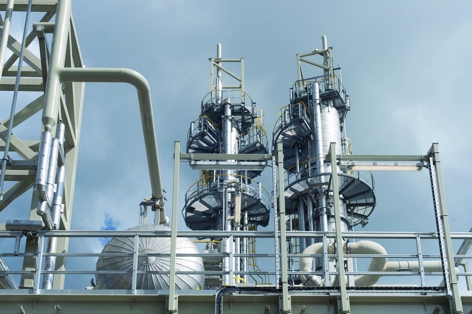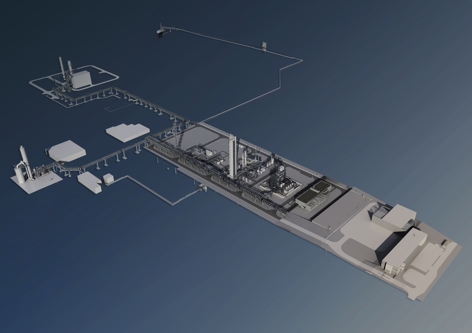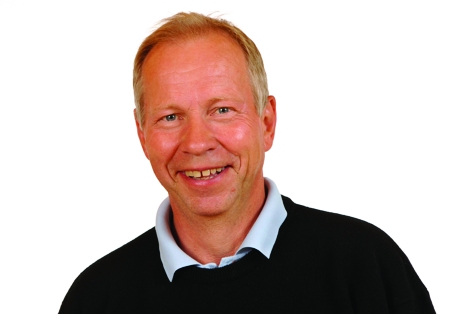
Carbon capture and storage is already big business, but perhaps not for the reasons that many would hope. The market for improving oil extraction by pumping carbon dioxide into hydrocarbon reservoirs (known as enhanced oil recovery or EOR) was around $54.2bn (£34.4bn) in 2011 and growing rapidly, according to a report from SBI Energy.
This is the great irony of current CCS research: that a technology heralded as a means of saving the planet from climate change caused by burning fossil fuels is actually helping oil companies to get more of the stuff out of the ground. And despite what progress has been made – the world’s largest commercial facility and first to integrate fully with a coal-fired power plant is due to open in Canada next year – CCS has yet to gain the speed and success required to prove that it really can cut CO2 emissions at the levels needed and in a cost-effective way.
Europe, in particular, has struggled to get commercial CCS off the ground and suffered the cancellation of several projects, while the UK had to relaunch its £1bn CCS competition after the original scheme collapsed. So the Norwegian government has decided to take more active steps and since May 2012 has run the world’s largest industrial-scale CCS test facility, the CO2 Technology Centre Mongstad (TCM). And Norway’s reason for putting up 75 per cent of the centre’s approximately £670m capital costs was not even to decarbonise its own existing electricity supply.
‘Carbon-based power generation is a rare thing in Norway: 97 per cent of all electricity in Norway is generated by hydropower,’ said Tore Amundsen. Since his days on TCM’s initial steering committee back in 2008, Amundsen has been one of the driving forces behind the project, becoming its first managing director and now its chairman, as well as CEO of its state-owned parent firm Gassnova. The motivation for funding the centre, he said, came not from worries about Norway’s own emissions but rather its position in the world economy.
‘First and foremost because of the climate issue itself, for which Norway feels obliged to contribute considerably to help solving, being a fairly well off country. But another perhaps more important reason for the government is the fact that Norway has huge exports of oil and gas and this was seen as an important mission to ensure that there will be a viable oil and gas market rather in the future.’ In short, Norway wanted to make its largest export industry sustainable both environmentally and economically.
But instead of simply making money available to companies wanting to prove their technology – as the UK is doing – the Norwegian government has paid for a 63-hectare facility dedicated to testing CCS equipment and processes at an industrial level, committing to funding research in a way that much of the private sector hasn’t. Even TCM’s main industrial partner, Statoil, is 67 per cent state-owned and became involved in the project to be able to meet government requirements for fitting CCS technology to any new fossil fuel-fired power plants it wants to build.

‘Because the government’s putting 75 per cent of all the money they felt they needed to be involved in it,’ said Amundsen. ‘And also to gain experience for ourselves and in that way to make sure that the knowledge we accumulate at the test facility can be made available to the rest of the world, not only to a few private companies.’ Very altruistic-sounding motives, although undoubtedly Norway would like to be able to profit from exporting CCS technology, just as the UK would.
The main function of TCM’s first stage of operation is to test the solvents used to absorb CO2 from exhaust gases. So far they’re testing an amine-based solution from Norwegian firm Aker and an ammonia solvent created by the French company Alstom. TCM’s equipment allows firms to test their methods on the large scale needed to simulate deployment in a power plant. ‘In that way you gain experience that you would not be able to get in a smaller pilot test facility,’ said Amundsen. ‘So the size in itself is very important to get the right experience and to reduce the risk once you are going to scale it up.’
One of the challenges TCM has already been able to address was determining what level of carcinogenic by-products the amine solvents might release. But the biggest obstacle will be helping to make CCS economic by reducing the amount of energy it uses. ‘The reduction of energy consumption is of course perhaps the most important challenge in developing these technologies,’ said Amundsen. ‘Either through finding chemicals that require less energy to release the CO2 again after absorption, or through designing the process equipment in a way that conserves the use of energy.’
Aside from established solvents, TCM has examined up to 40 other chemicals and selected around 12 to test at a smaller facility it hopes to build as part of its next phase, helping to mature the technologies before they are scaled up for trials at the main centre. Plus there are solid solvent CCS methods and membrane-based separation technologies TCM is examining. ‘But the reason why we are focused in the first instance on the solvent-based technologies is that there are many of them actually being worked on today and they have this commonality that they can all be tested in one and the same test facility,’ said Amundsen.

Despite the largely state operation of TCM, Amundsen’s background is almost entirely in the private sector where he has spent 30 years managing engineering companies, particularly in the oil and gas sector for the latter half of that time. ‘I’m not an engineer by education,’ he said. ‘[But] I got used to working with engineers at least, got used to understanding their language and their way of thinking. So it was a little bit by accident that I came to work with carbon capture.’
Amundsen admits he has encountered plenty of differences in his move to what is effectively the public sector. ‘But then again TCM was thought of as a joint venture between government and industry so there’s a mixture of both.’ One thing that was been easier was securing funding, he said. ‘The technology centre has unanimous backing from Parliament and from politicians in Norway. I think they all agree that the technology centre is a very good idea.’ But, he added, ‘there’s much more disagreement on whether the government should fund the subsequent large capture plants to capture all of the CO2 from the environment’.
Will the private sector step in if the government decides not to fund working CCS plants? ‘I think sometime in the future this will become a normal market with normal funding of research and development and subsequently testing also. But I think for the foreseeable future this has to be funded through great extent with money from the government.’
Amundsen also agreed that additional mechanisms will be needed to create a real market for carbon capture, which brings us back to EOR. ‘If you look to the US, for instance EOR, is the main driver of CCS.’ But ultimately, he said, governments will have to take strong action if the world is to build the 3,500 CCS plants the International Energy Agency says are needed to stem climate change. ‘EOR alone cannot be the only driver to make CCS happen on a big scale. I think governments just have to build up the courage to impose regulatory measures to make sure that the owners of CO2 emission facilities actually have to take the cost. Which then, of course, in the end means that each and every one of us has to make the sacrifice and pay for it.’

Tore Amundsen
Chairman, CO2 Technology Centre Mongstad (TCM)
CEO, Gassnova
Education
1975 MSc Business Admin and Economics, Norwegian School of Economics (NHH)
Career
- 1989 Executive officer, Kvaerner ASA
- 1999 CEO, Simrad Optronics Ltd
- 2007 Founder, Uniq Consulting
- 2008 Project manager, Gassnova
- 2009 Managing director, TCM
- 2013 CEO, Gassnova




Glasgow trial explores AR cues for autonomous road safety
They've ploughed into a few vulnerable road users in the past. Making that less likely will make it spectacularly easy to stop the traffic for...